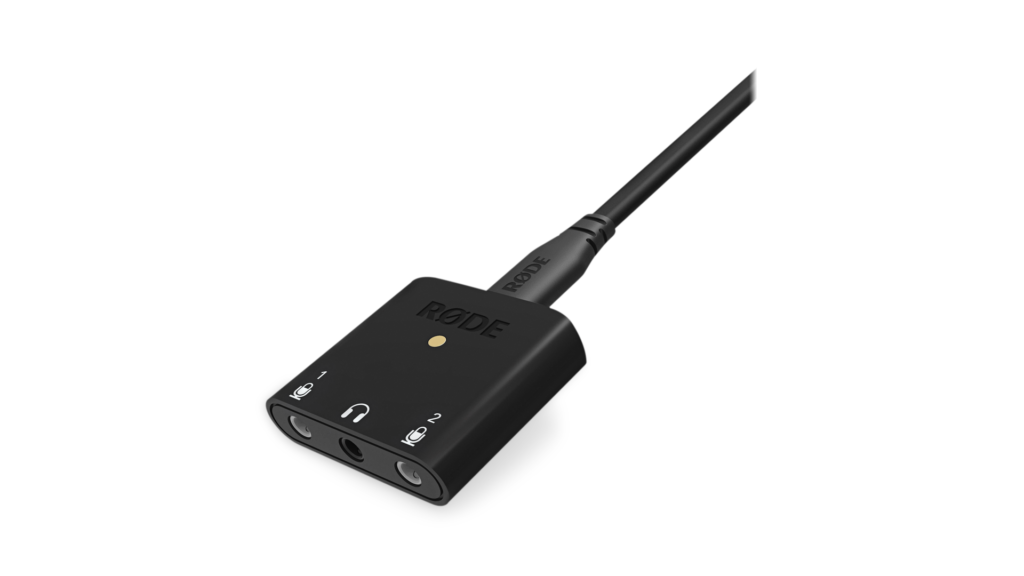After exhaustive tests with five different microphone models, I am now ready to share my review with you of the brand-new AI-Micro multiplatform audio interface from RØDE. It’s dual channel, 48 kHz/24-bit and bidirectional. As I explained in the first look article a few weeks ago, I am particularly excited and enthusiastic about it since I had done so much deep and wide coverage of the otherwise underpublicized SC6-L dual channel interface in 2018-2019. I consider the original SC6-L to be the inspiration for the just announced AI-Micro. In fact, the two devices share much more similarities than differences. Both are specifically designed and marketed to connect and adapt up to to two unbalanced 3.5 mm microphones to connect digitally to a modern device at our absolute standard of 48 kHz (see 48kHzAlliance.com) sampling rate and 24-bit depth/resolution. Both supply bias voltage (“plugin power”, not phantom power) for these microphones and both offer stereo monitoring, with latency-free sidetone so you can hear yourself for quality control. Ahead, I’ll cover the small —yet huge— improvements in the new AI-Micro and share the results with five microphone models.
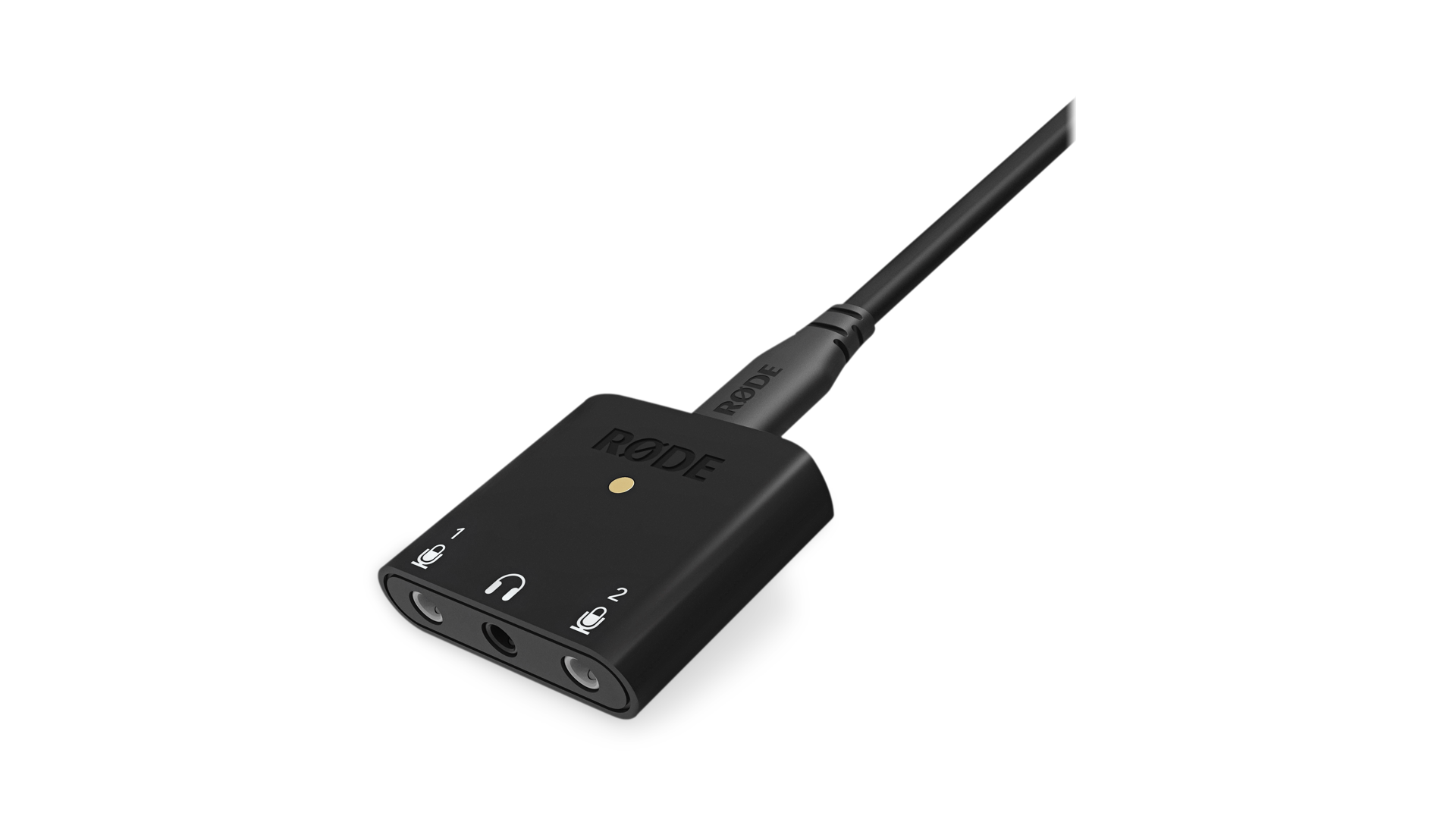
Link to my prior articles on the SC6-L
Here is a link to my prior articles on the SC6-L.
What’s in the name?
Although not specifically mentioned by RØDE, I suspect that the AI portion of the name does not stand for Artificial Intelligence but for Audio Interface. Although the Micro suffix could refer to the word microphone, I suspect it actually refers to how small and light the Ai-Micro is. Weighing less than 20 grams, the AI-Micro is extremely compact and lightweight – a pocket-sized solution for recording 48 kHz/24-bit audio anywhere.
What’s new in the AI-Micro and its apps
Unlike the original SC6-L (which is limited to those Apple devices which have a Lighting port, i.e. iPhone, iPad and iPod Touch), the new AI-Micro is officially multiplatform for Android, iOS, iPadOS, macOS and Windows. (Read ahead to understand what I discovered about the AI-Micro’s partial compatibility with Chromebooks as of publication date of this article.) In order to work with all of the new platforms, the new AI-Micro includes cables for USB-A, USB-C and Lightning.
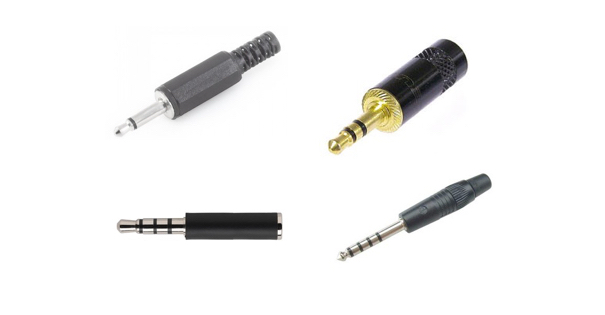
In addition, the AI-Micro’s 3.5 mm inputs are now universal and bulletproof. This means that the AI-Micro automatically resolves the topic I covered in 2015 in TS/TRS/TRRS/TRRRS: Combating the misconnection epidemic (illustrated above).
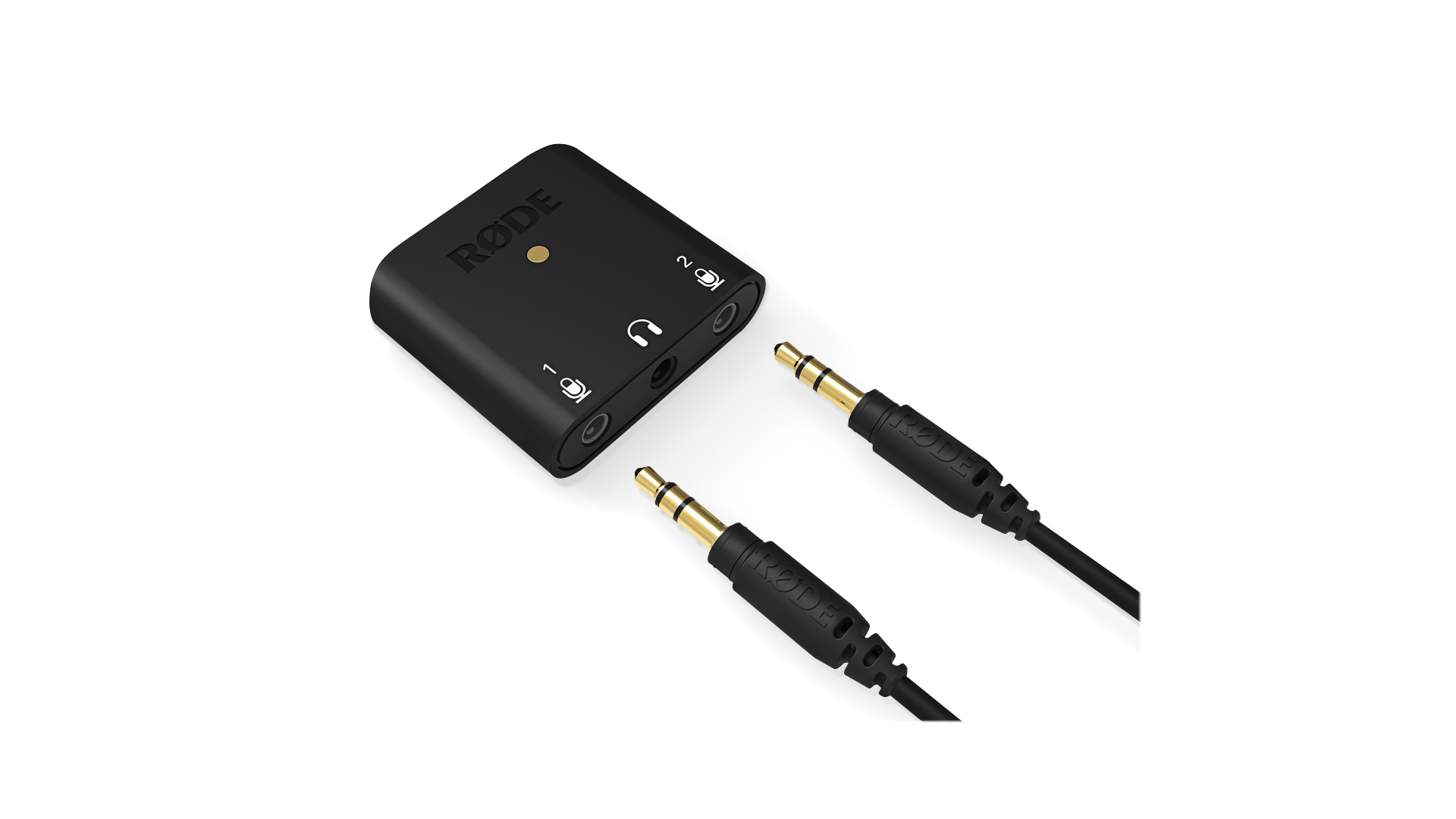
Now you can plug in any 3.5 mm microphone without worrying whether it’s TRS or TRRS and it will simply work, without having to look for any adaptor. However, there is one important exception to that where we’ll still want to use an adapter, which I’ll cover in this upcoming related article: How to use the RØDE AI-Micro with a combined headset.
The free RØDE Central software lets you configure the AI-Micro from a computer (macOS or Windows) or mobile device (Android, iOS, iPadOS). On mobile devices, the RØDE Reporter app (a recording app I have been covering for several years) also offers the same configuration options.
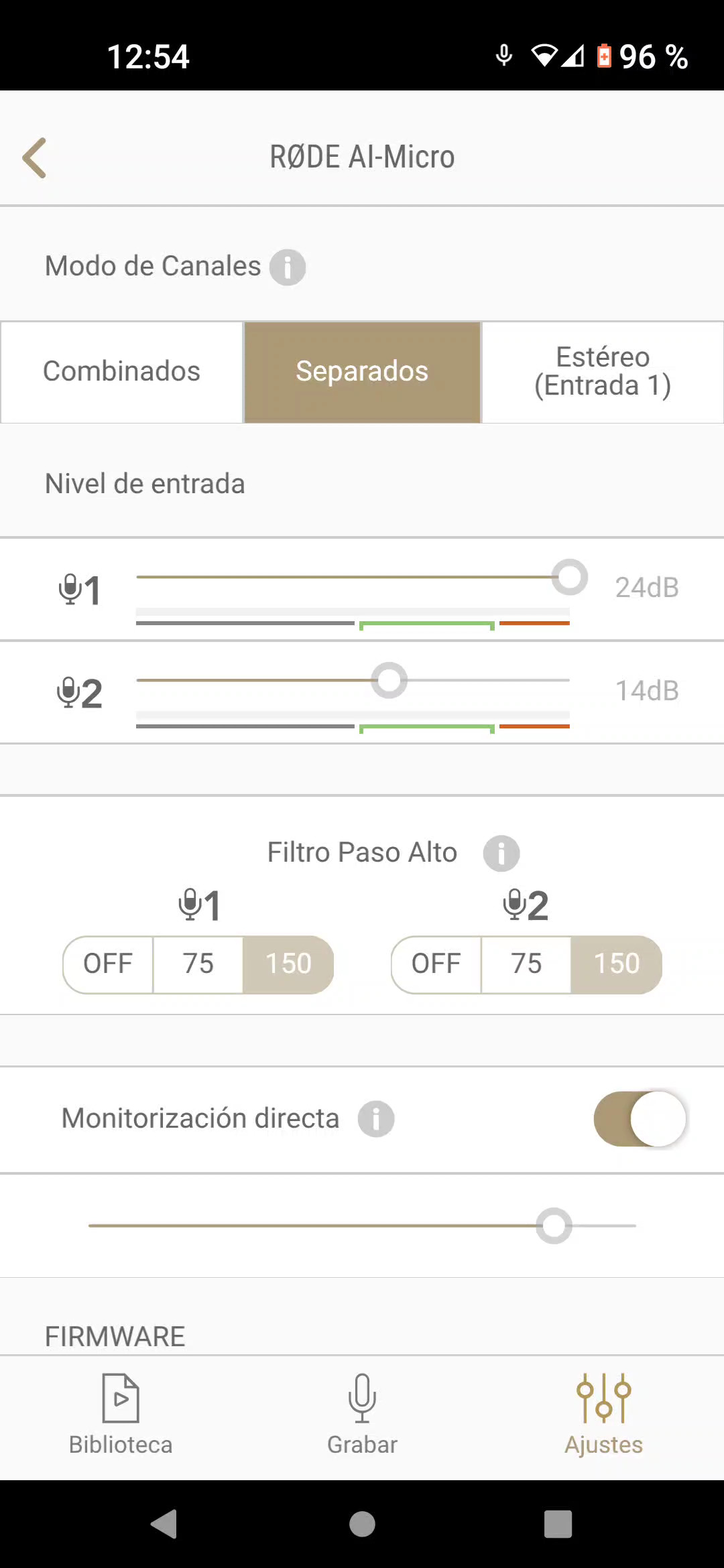
They include adjusting the input gain and headphone output level, switching between Merged (for live broadcast or live-to-drive production, translated as Combinados if your device is in Castilian), Split (when post production will be done later, translated as Separados) or Stereo channel mode (Estéreo), with the option of engaging a high-pass filter. When in Split (Separados)mode, the free RØDE Reporter mobile app (Android, iOS or iPadOS) finally offers independent gain control for each audio source. This is something I requested years ago for the RØDE Reporter app. These new features in the RØDE Reporter app for Android with version 1.1.11 on November 16, 2021. These are all very welcome. However, even when recording in the Split (Separados) mode, the result is still a fake stereo file. There is currently still now way to get individual mono WAV files, so an extra step is required later to do that in post-production.
The AI-Micro interface also promises a “high output headphone output”, which implies that it is higher powered than the one in the SC6-L, although I never had a problem with the headphone output in the SC6-L, since all of my headphones are well under 100 Ω (ohms). However, this is welcome for people who use headphones which are much higher impedance.
Interoperability with RØDE Connect
The new AI-Micro interface is fully compatible with RØDE Connect software, a free recording and streaming program for macOS and Windows I previously covered here. As a summary, RØDE Connect software enables up to four microphones to be connected to a computer, with level controls, solo and mute buttons, and 48 kHz audio processing accessible at the click of a button. RØDE Connect includes a compressor, noise gate, and APHEX Aural Exciter and Big Bottom effects which previously have been available in the US$599 RØDECaster Pro (covered in many past articles). Up until now, RØDE Connect has been limited to using certain —very recent— USB microphones from RØDE, excluding conventional microphones with only an analog output. Now, using the AI-Micro with RØDE Connect allows us to record or live broadcast/stream with nearly any electret condenser compatible with low bias voltage (aka “plugin power”) mics, self-powered shotgun microphone or even dynamic XLR mics if you are willing to carry out some extra steps, as elaborated ahead.
AI-Micro tests with 5 microphones
I tested the AI-Micro with 5 different microphones, of which only two are from RØDE. I did this to demonstrate the AI-Micro’s versatility and to demonstrate its performance with different types of mics. Although for actual use, often two microphones will be connected to the AI-Micro, the purpose of these tests is to demonstrate the compatibility which exists and also the quality offered by the AI-Micro with each type of microphone.
ELECTRET CONDENSER MICROPHONES
MXL MM130 handheld microphone with RØDE large WS2 windscreen on top of a generic one, to avoid plosives:
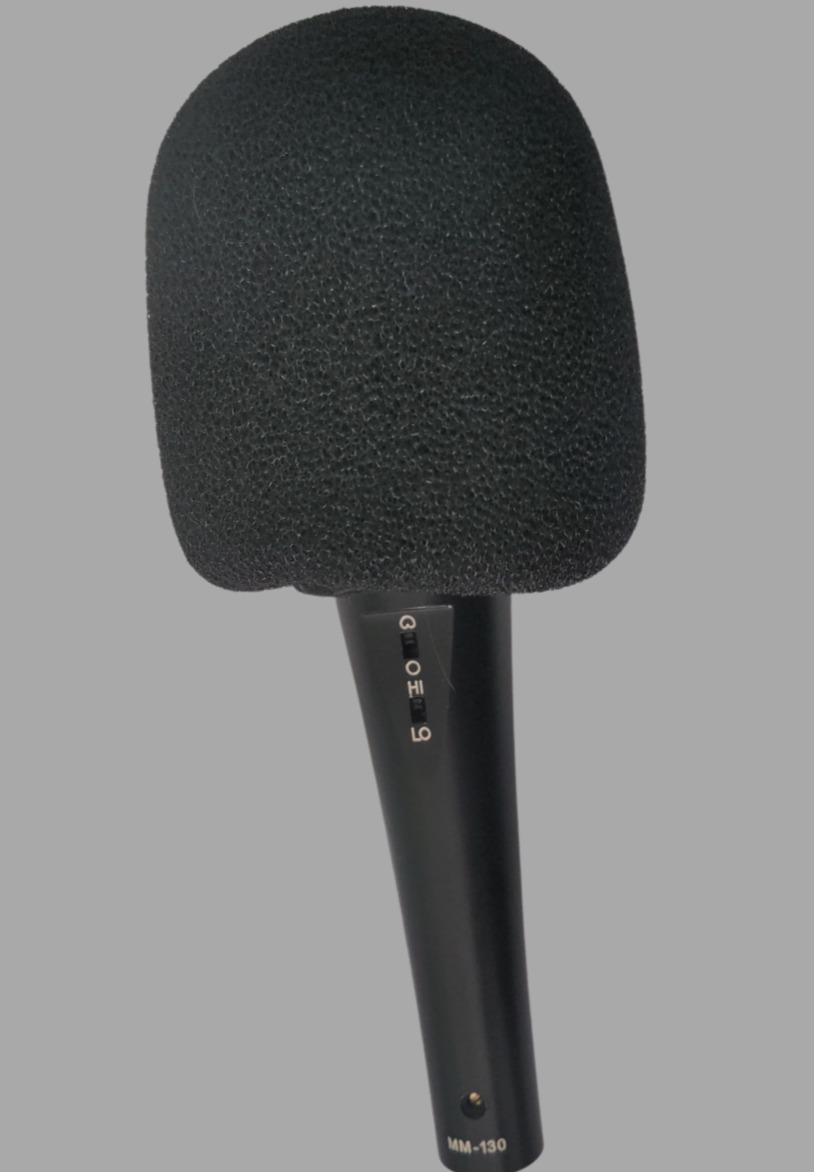
Above, MXL MM130 flat audio.
Audio Player
Above, MXL MM130 audio processed by Accusonus ERA plugins (covered in several articles)
The MXL MM130 is among the very view XLR electret condenser microphones that accept either 48 volts phantom power or low bias voltage (aka “plugin power”). It has a switchable pickup pattern: cardioid and omnidirectional. I made this test with the cardioid pickup pattern and two windscreens to avoid plosives (pops): a generic one plus the RØDE WS2 windscreen on top of that one. i did not use the standard cable that comes with the MXL MM130, but the Senheisser KA 600 cable which goes from XLR to TRS 3.5 mm while passing the low bias voltage, aka “plugin power”.
RØDE Lavalier Go:
Audio PlayerAbove, RØDE Lavalier Go flat audio
Audio PlayerAbove, RØDE Lavalier Go audio processed by Accusonus ERA plugins (covered in several articles)
Like most lavalier microphones on the market today, the Lavalier Go is electret condenser (powered by low voltage bias, aka “plugin power”) and has an omnidirectional pickup pattern in order to be very forgiving in terms of its placement. I used the included windscreen to reduce plosives.
RØDE Lavalier II:
Audio PlayerAbove, RØDE Lavalier II flat audio
Audio PlayerAbove, RØDE Lavalier II audio processed by Accusonus ERA plugins (covered in several articles)
Like most lavalier microphones on the market today, the just- released Lavalier II (to be reviewed soon) is electret condenser (powered by low voltage bias, aka “plugin power”) and has an omnidirectional pickup pattern in order to be very forgiving in terms of its placement. I used the included windscreen to reduce plosives.
V-Moda BoomPro head microphone mounted on Maono AU-HH601 headphones, which I branded:
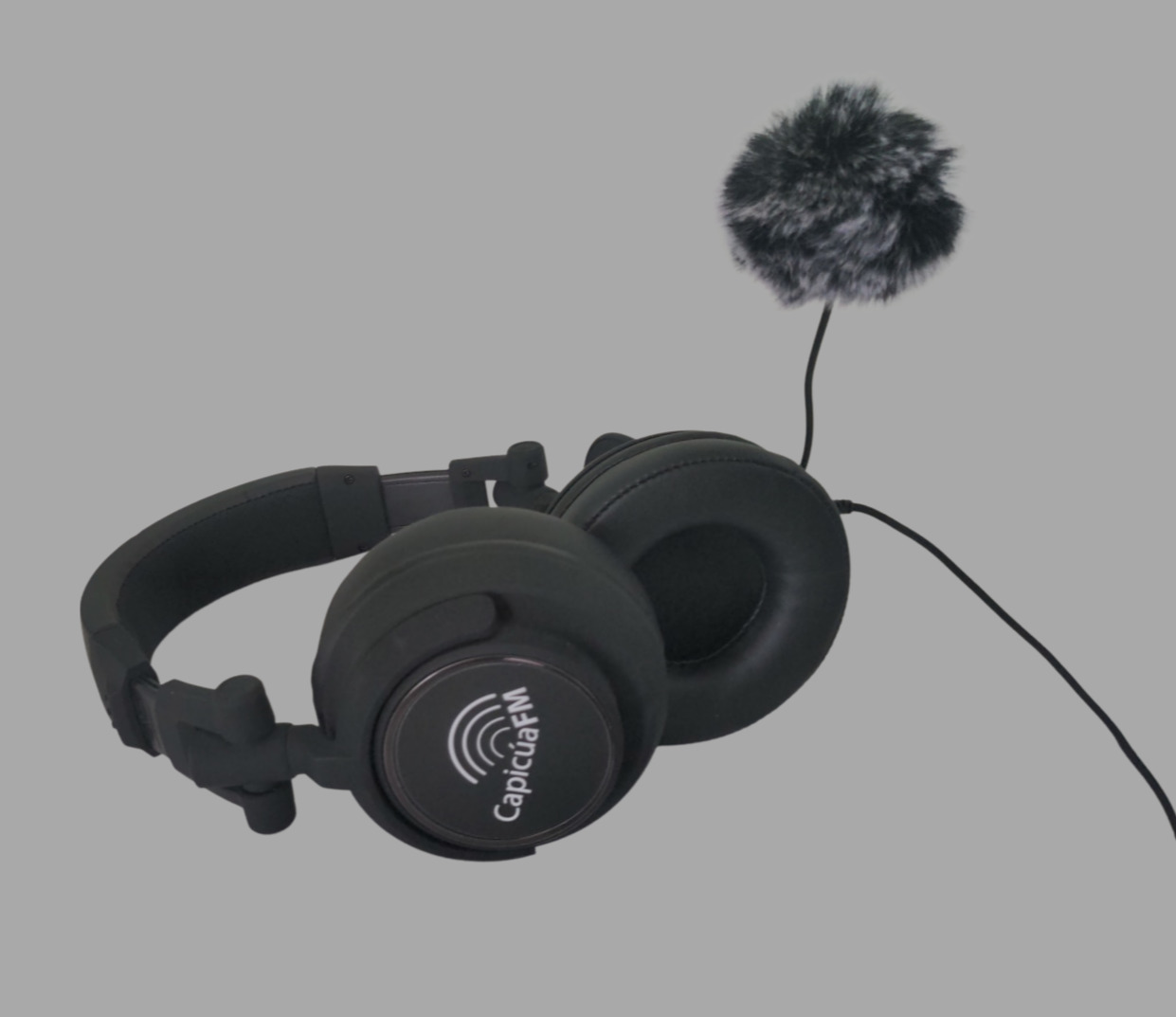
Above, V-Moda BoomPro flat audio
Audio PlayerAbove, V-Moda BoomPro audio processed by Accusonus ERA plugins (covered in several articles)
The Italian V-Moda BoomPro is a head-mounted microphone that attaches to any headphone with a detachable 3.5 mm TRS stereo cable, replacing it with its own cable which terminates into a TRRS. Effectively, the V-Moda BoomPro converts your favorite headphone into a combined headset with microphone and headphones. See the upcoming related article How to use the RØDE AI-Micro with a combined headset. This is ideal when the producer/interviewer wants to record her/himself on one track and use a separate cardioid microphone for the interviewee, whose voice can be recorded on another separate track (for more control in post production) or combined (for live broadcast/streaming or live-to-drive recording where little or no post-production can take place, due to time or budget constraints. I used the V-Moda BoomPro with a third-party artificial “dead cat” to reduce plosives. In the photo, you’ll see that I branded the Maono AU-HH601 headphones (reviewed here) with the CapicúaFM show, thanks to Sticker Mule. (Get a US$10 discount with this link.)
DYNAMIC MICROPHONE
Behringer SL 75C dynamic XLR handheld microphone with Shure presidential A81WS windscreen (covered in many articles):
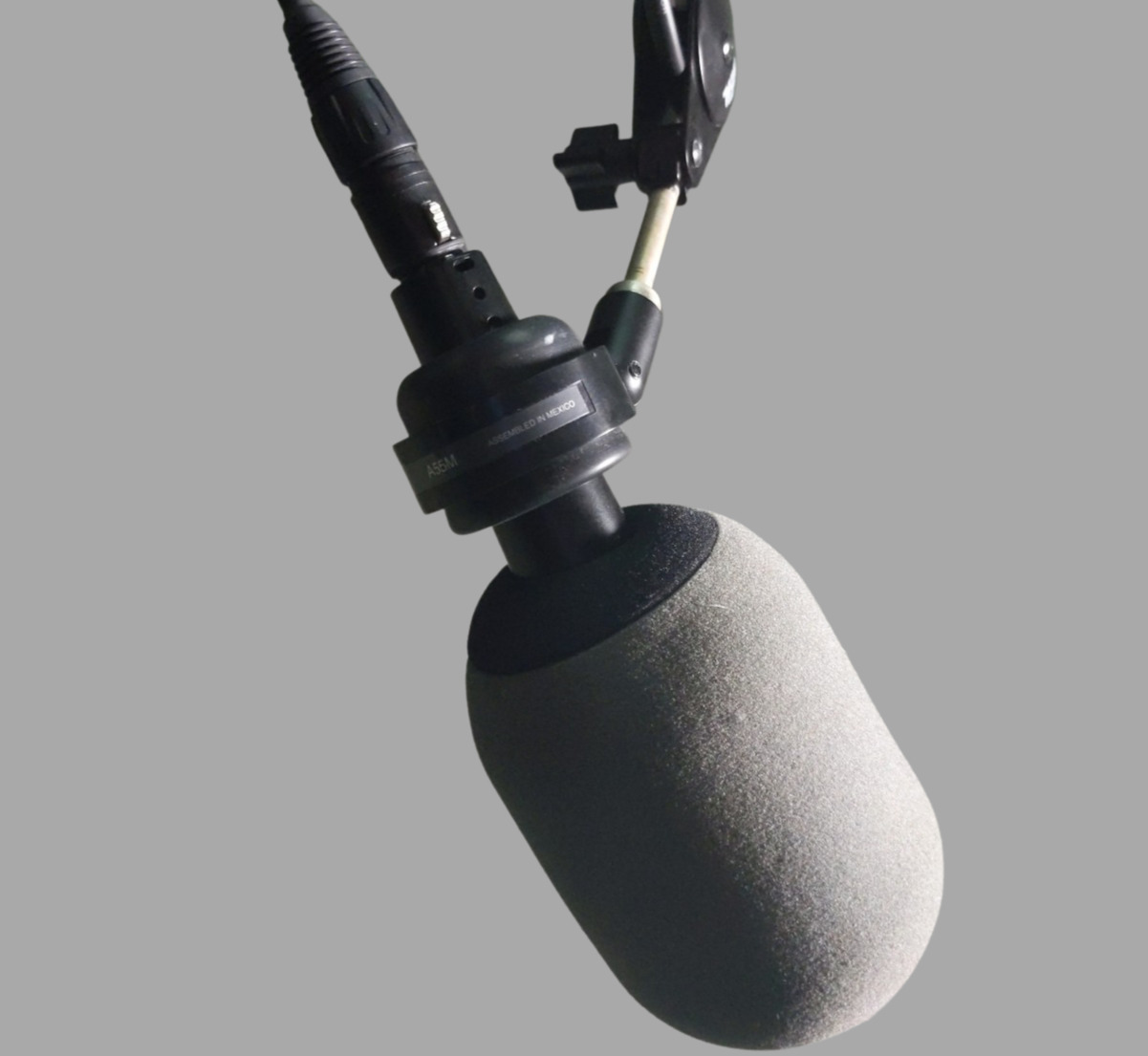
Audio Player
Above, Behringer SL 75C flat audio
Audio PlayerAbove, Behringer SL 75C audio processed by Accusonus ERA plugins (covered in several articles)
As discussed in many prior articles, dynamic microphones are less sensitive and have a faster falloff from distant sounds. The sub US$30 Behringer SL 75C dynamic microphone is sometimes considered to be a “clone” of the Shure SM57. However, I consider the Behringer SL 76C to have a better native frequency response for voice recordings than the SM57, especially when used the the presidential A81WS windscreen to reduce plosives and excessive breathing. However, for field production where there might be EMI (electromagnetic interference) or RFI (radio frequency interference), I prefer to use a dynamic microphone with a built-in transformer. Like the US$399 Shure SM7B, the sub US$30 Behringer SL 75C dynamic microphone is transformerless. In a controlled studio environment where it has already been proven that there is no problem with EMI or RFI, we can consider using a transformerless dynamic microphone.
For this test only, I used a special cable that connects from XLR to TRS while blocking the very low bias voltage or “plugin power”, since many manufacturers (including Shure and Sony) have warned that this low bias voltage or “plugin power” can damage dynamic microphones, which is not normally the case with 48 volt phantom power, which is not required for dynamic microphones, but in most cases won’t hurt them. I am used this special cable since so far, RØDE hasn’t given us any option to deactivate the low bias voltage or plugin power via software, the way some audio recorders do in menus or via a switch.
Although the AI-Micro had more than enough clean gain for all of the electret condenser microphone tested above (where the gain did not need to be at the maximum setting), things were different with the Behringer SL 75C dynamic microphone tested here. The maximum gain in the AI-Micro gave me levels well below the recommended range for recording. Like all of the recordings being presented here, all have been trimmed and normalized to the same LUFS level in Hindenburg Pro. One thing that helped this situation is the fact that the AI-Micro and the RØDE Reporter app record with 24-bit depth so less is lost when normalizing (in this case, boosting) via software. Although there is a soft hiss in the final normalized result (audible only with headphones and when paying attention), it is eliminated by the noise reduction provided by the Accusonus ERA plugins (covered in several articles). I hope RØDE will eventually offer more gain and offer a software selection to deactivate the bias voltage, aka “plugin power”. The two workarounds (normalizing in post and using a special cable) are not ideal solutions. In addition, boosting later is indeed an option for productions that will be edited later, but not for broadcast/streamed live.
Although the performance with dynamic microphones can indeed be perfected with the AI-Micro by adding an iRig Pre 2 from IK Multimedia (reviewed here) as I used with one of my tests when reviewing the Wireless Go II, with this review of the AI-Micro, I preferred to test the quality with a dynamic microphone connected directly, not with any pre-preamp.
Partial Chromebook compatibility
Unlike the US$599 RØDECaster Pro (which —with my personal testing— is sadly invisible to a Chromebook with the latest firmware so far), the AI-Micro is indeed visible, selectable and usable from my Chromebook. However, when searching for the Android version of a very recent Chromebook in the Google Play store (where most Android apps can be found and installed), a message appears, saying:
RØDE Reporter by RØDE Microphones isn’t available on Google Play on this device
When searching for RØDE Central, I get a similar message:
RØDE Reporter mobile by RØDE Microphones isn’t available on Google Play on this device
That said, the AI-Micro works with the Auphonic app for Android, although there is no control for the input gain. Hopefully, a future update for the RØDE Central and the RØDE Reporter apps for Android will be available and functional on Chromebooks which run Android apps.
Ratings
Build quality and appearance

Connectivity and operability with TRS and TRRS electret condenser microphones

Sound quality with TRS and TRRS electret condenser microphones

Connectivity and operability with Android, iOS, macOS and Windows

Connectivity and operability with Chromebook

(This could improve when the RØDE Reporter app is updated in the future.)
Connectivity and operability with directly-connected dynamic XLR microphones for recorded programs which bill be edited and processed

Connectivity and operability with directly-connected dynamic XLR microphones for live broadcast/streaming

Sound quality with directly-connected dynamic XLR microphones for projects that are edited and processed

Conclusions
The new AI-Micro audio interface unlock all of the quality and power of the original SC6-L and unleash it to work with nearly any platform. In addition, it solves the TRS/TRRS misconnection epidemic making the connection to the 3.5 mm microphone foolproof. The bridge between RØDE Connect software and conventional analog mics promise to make it “like a bridge over troubled waters”. Although the AI-Micro is obviously designed to work primarily with electret condenser microphones, it can be stretched to be used with XLR dynamic microphones as long as the precautions are carried out as covered within this article. Be sure to be on my free mailing list for upcoming reviews and articles, including the review on the Lavalier II and How to use the RØDE AI-Micro with a combined headset.
(Re-)Subscribe for upcoming articles, reviews, radio shows, books and seminars/webinars
Stand by for upcoming articles, reviews, books and courses by subscribing to my bulletins.
In English:
- Email bulletins, bulletins.AllanTepper.com
- In Telegram, t.me/TecnoTurBulletins
- Twitter (bilingual), AllanLTepper
En castellano:
- Boletines por correo electrónico, boletines.AllanTepper.com
- En Telegram, t.me/boletinesdeAllan
- Twitter (bilingüe), AllanLTepper
Most of my current books are at books.AllanTepper.com, and also visit AllanTepper.com and radio.AllanTepper.com.
FTC disclosure
There is currently no financial relationship between RØDE and Allan Tépper or TecnoTur LLC. Some of the other manufacturers listed above have contracted Tépper and/or TecnoTur LLC to carry out consulting and/or translations/localizations/transcreations. Many of the manufacturers listed above have sent Allan Tépper review units, including IK Multimedia, Maono, MXL and RØDE (although not V-Moda to date). So far, none of the manufacturers listed above is/are sponsors of the TecnoTur, BeyondPodcasting, CapicúaFM , SpeakCastilian or TuSaludSecreta programs, although they are welcome to do so, and some are, may be (or may have been) sponsors of ProVideo Coalition magazine. Some links to third parties listed in this article and/or on this web page may indirectly benefit TecnoTur LLC via affiliate programs. Allan Tépper’s opinions are his own. Allan Tépper is not liable for misuse or misunderstanding of information he shares.

Filmtools
Filmmakers go-to destination for pre-production, production & post production equipment!
Shop Now